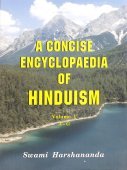Nirmanacitta, Nirmāṇacitta, Nirmana-citta: 1 definition
Introduction:
Nirmanacitta means something in Buddhism, Pali. If you want to know the exact meaning, history, etymology or English translation of this term then check out the descriptions on this page. Add your comment or reference to a book if you want to contribute to this summary article.
Alternative spellings of this word include Nirmanachitta.
In Buddhism
Mahayana (major branch of Buddhism)
Source: Wisdom Library: Maha Prajnaparamita SastraNirmāṇacitta (निर्माणचित्त, “creation minds”).—The fourteen minds of metamorphosis (nirmāṇacitta) are, according to the 2nd century Mahāprajñāpāramitāśāstra chapter 11:
(1–2) In the first dhyāna, two minds, (viz. that of kāmadhātu and that of the first dhyāna);
(3–5) In the second dhyāna, three minds, (viz., that of kāmadhātu, that of the first dhyāna and that of the second dhyāna);
(6–9) In the third dhyāna, four minds, (viz., that of kāmadhātu and those of the first, second and third dhyānas);
(10–14) In the fourth dhyāna, five minds, (viz., that of kāmadhātu and those of the first, second, third and fourth dhyānas).
When a person possesses a dhyāna, he also possesses the creation minds (nirmāṇacitta) of the lower levels. In the first dhyāna he thus possesses two nirmānacittas, that of the first dhyāna and also that of kāmadhātu; in the second dhyāna, three; in the third, four; in the fourth, five nirmāṇacittas.

Mahayana (महायान, mahāyāna) is a major branch of Buddhism focusing on the path of a Bodhisattva (spiritual aspirants/ enlightened beings). Extant literature is vast and primarely composed in the Sanskrit language. There are many sūtras of which some of the earliest are the various Prajñāpāramitā sūtras.
See also (Relevant definitions)
Partial matches: Nirmana, Citta.
Full-text: Nirmanakaya, Nirmana.
Relevant text
Search found 4 books and stories containing Nirmanacitta, Nirmāṇacitta, Nirmana-citta, Nirmāṇa-citta; (plurals include: Nirmanacittas, Nirmāṇacittas, cittas). You can also click to the full overview containing English textual excerpts. Below are direct links for the most relevant articles:
Maha Prajnaparamita Sastra (by Gelongma Karma Migme Chödrön)
9. Creation minds (nirmāṇacitta) < [Part 4 - Questions relating to the dhyānas]
Tenth comparison or upamāna: A metamorphosis (nirmāṇa) < [Bodhisattva quality 19: the ten upamānas]
2. Multiple natures < [Part 4 - Understanding identical and multiple natures]
Jainism and Patanjali Yoga (Comparative Study) (by Deepak bagadia)
Part 4.12 - Kaivalya (State of liberation) < [Chapter 2 - Yoga philosophy and practices]
Yoga-sutras (Ancient and Modern Interpretations) (by Makarand Gopal Newalkar)
Sūtra 4.6 < [Book IV - Kaivalya-pāda]
Sūtra 4.4 [Nirmāṇacitta—Artificial Minds] < [Book IV - Kaivalya-pāda]
Abhidharmakośa (by Leo M. Pruden)
Related products
